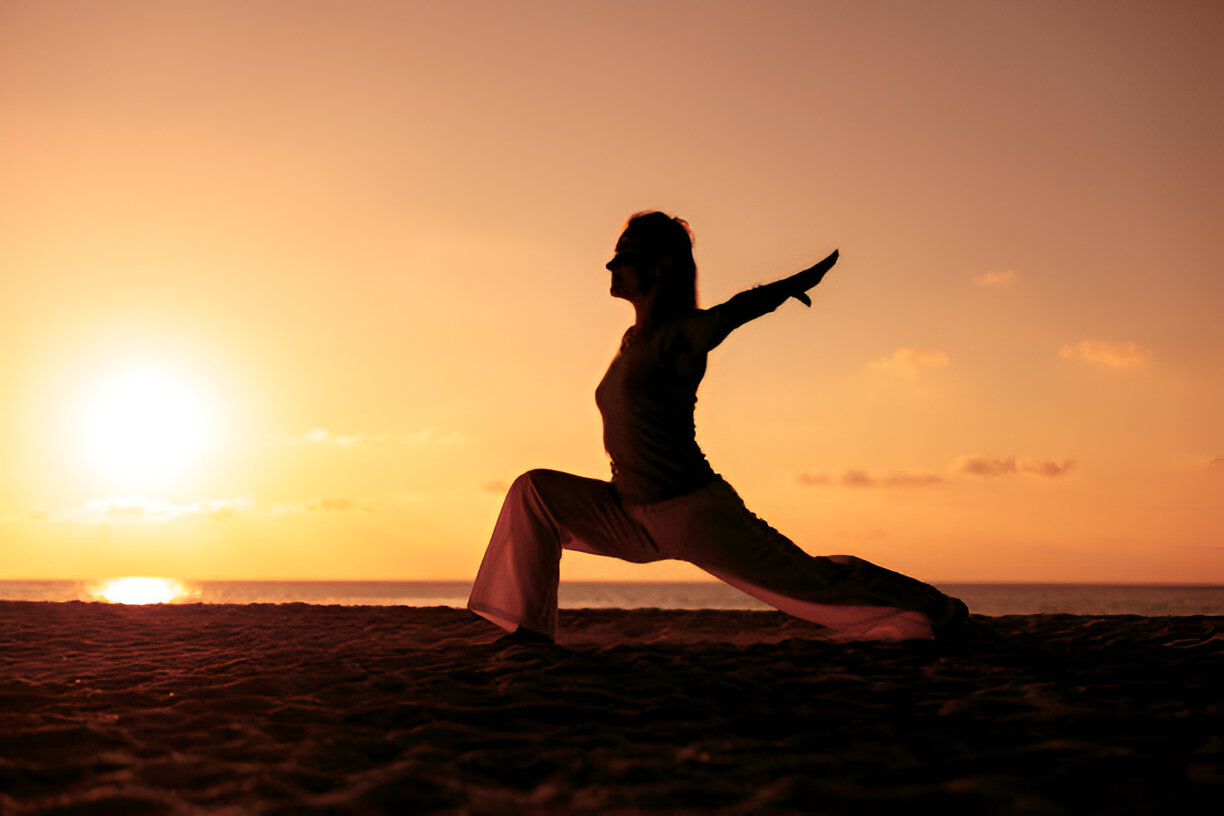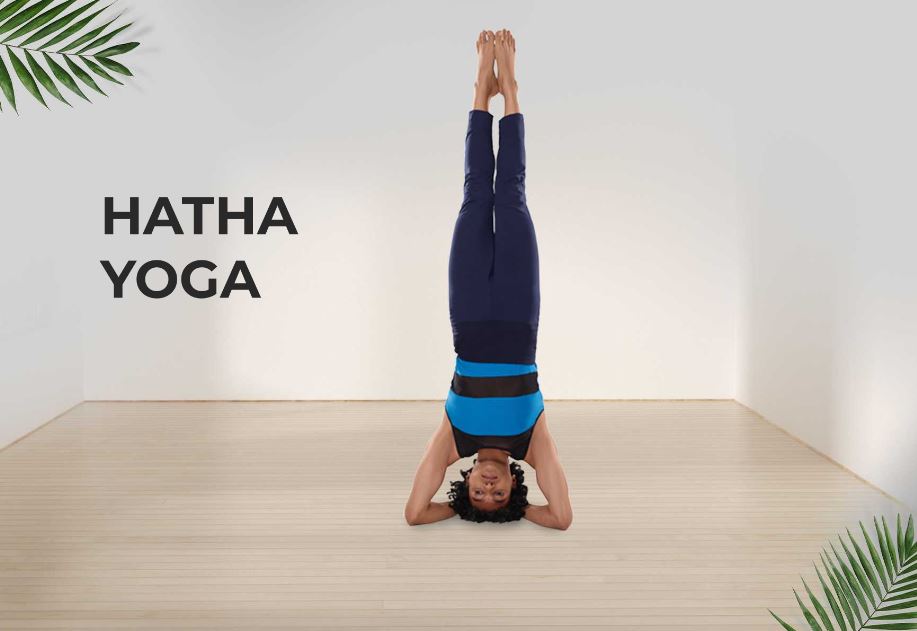If you’ve ever typed “yoga near me” into a search engine, you’ve probably come across class names like Hatha and Vinyasa. While they’re both rooted in ancient yogic traditions, these two styles offer very different experiences on the mat. Whether you’re a beginner exploring yoga for the first time or a seasoned practitioner looking to switch things up, understanding the differences between Vinyasa and Hatha yoga can help you choose the right practice for your body, lifestyle, and goals.
Let’s break down both styles in depth and help you decide which one aligns best with your needs.
What is Hatha Yoga?
Hatha yoga is often considered the foundation of all physical yoga practices. The word “Hatha” comes from Sanskrit—“Ha” meaning sun and “Tha” meaning moon—symbolizing the balance between opposing energies. In practice, Hatha refers to any type of yoga that teaches physical postures, but today, it’s commonly used to describe a slow-paced, gentle style of yoga.
What to Expect in a Hatha Class:
- Focus on static poses held for longer durations
- Emphasis on correct alignment and breath
- A slower, more mindful pace
- Time for rest and introspection
- Ideal for beginners or those seeking relaxation
Hatha yoga classes typically include a warm-up, a variety of seated and standing postures, breathing exercises (pranayama), and relaxation techniques like guided meditation or savasana. The main goal is to create harmony between the body and mind.
What is Vinyasa Yoga?
Vinyasa yoga is dynamic, fluid, and fast-paced. The term “Vinyasa” means “to place in a special way,” and in the context of yoga, it refers to the seamless flow of movement coordinated with breath. Each movement transitions smoothly into the next, creating a moving meditation.
What to Expect in a Vinyasa Class:
- Constant movement and flow
- Sun Salutations and sequences with smooth transitions
- Breath-synchronized poses (one breath, one movement)
- A cardio-like intensity
- Suitable for those who enjoy high-energy workouts
Vinyasa is ideal for those who like variety, as no two classes are the same. It can feel almost like a dance, as you flow through sequences with creativity and rhythm.
Key Differences Between Hatha and Vinyasa Yoga
| Feature | Hatha Yoga | Vinyasa Yoga |
|---|---|---|
| Pace | Slow and steady | Fast and flowing |
| Breath | Deep, controlled, often held | Breath-synchronized with movement |
| Intensity | Gentle, low impact | Moderate to high intensity |
| Sequence | Structured, static postures | Creative, dynamic sequences |
| Focus | Alignment and mindfulness | Flow and endurance |
| Best for | Beginners, seniors, stress relief | Intermediate/advanced, weight loss |
Benefits of Hatha Yoga
If your life feels like a whirlwind of tasks and distractions, Hatha can be your grounding force. Some of the main benefits include:
- Improved Flexibility: Holding poses longer allows muscles to stretch and open.
- Enhanced Mindfulness: The slower pace encourages awareness and mental clarity.
- Stress Reduction: Emphasis on breathing and relaxation helps calm the nervous system.
- Better Posture and Alignment: Focus on form helps reduce physical strain and build body awareness.
- Accessible for All Ages: Suitable for beginners, older adults, or those recovering from injuries.
Hatha is often recommended for those looking to ease into yoga without feeling overwhelmed.
Benefits of Vinyasa Yoga
If you love energy, movement, and a bit of sweat, Vinyasa is your style. Here’s what it offers:
- Cardiovascular Health: The constant motion provides a great workout for the heart.
- Strength Building: Sequences often include planks, chaturangas, and balances that tone muscles.
- Mental Focus: The need to stay in sync with breath and movement sharpens concentration.
- Detoxification: The faster pace and sweat help cleanse the body of toxins.
- Endorphin Boost: Like any vigorous activity, Vinyasa can lift your mood and boost energy levels.
Great for those looking to combine fitness with mindfulness, Vinyasa offers a holistic full-body workout.
Which Style is Better for Beginners?
Both styles are beginner-friendly, but they cater to different learning styles.
- Choose Hatha if you prefer a slower introduction, want to understand alignment, and need time in each pose to feel comfortable.
- Choose Vinyasa if you’re already somewhat active, enjoy movement, and are looking for a more upbeat experience.
If you’re completely new to yoga, starting with Hatha might be the best way to build a solid foundation. Once you feel confident, transitioning to Vinyasa can offer a more physically engaging experience.
Which is Better for Weight Loss?
Vinyasa yoga burns more calories due to its continuous movement and intensity. It elevates the heart rate, builds lean muscle, and can support weight management goals when paired with a healthy lifestyle.
Hatha yoga, on the other hand, helps reduce stress—a key factor in weight gain—and improves metabolism over time. While it’s not as physically demanding, it’s powerful in its own way.
Choosing Based on Your Mood or Goals
Sometimes, the best choice isn’t about which style is “better” but about what you need in the moment.
- Feeling anxious or burned out? Go for a calming Hatha class.
- Feeling sluggish or low-energy? Try a Vinyasa session to energize your body and mind.
- Need to sleep better? Hatha’s restorative nature can help relax your nervous system.
- Want to feel strong and accomplished? Vinyasa’s athletic flow might be just the ticket.
Mixing both styles throughout the week can also create a well-rounded practice that supports every aspect of your wellness.
Conclusion: Listen to Your Body and Your Heart
At the end of the day, the “right” yoga style is the one that feels right for you. Both Hatha and Vinyasa are powerful in their own ways—offering different approaches to the same goal: harmony between body, mind, and spirit.
Hatha is grounding, introspective, and slow. Vinyasa is energizing, creative, and dynamic. The beautiful thing? You don’t have to choose just one. Yoga is about balance—so whether you’re holding a Warrior II or flowing through a Vinyasa, as long as you’re connecting with your breath, you’re doing it right.
Try both. Explore. Reflect. Your body will tell you what it needs.

